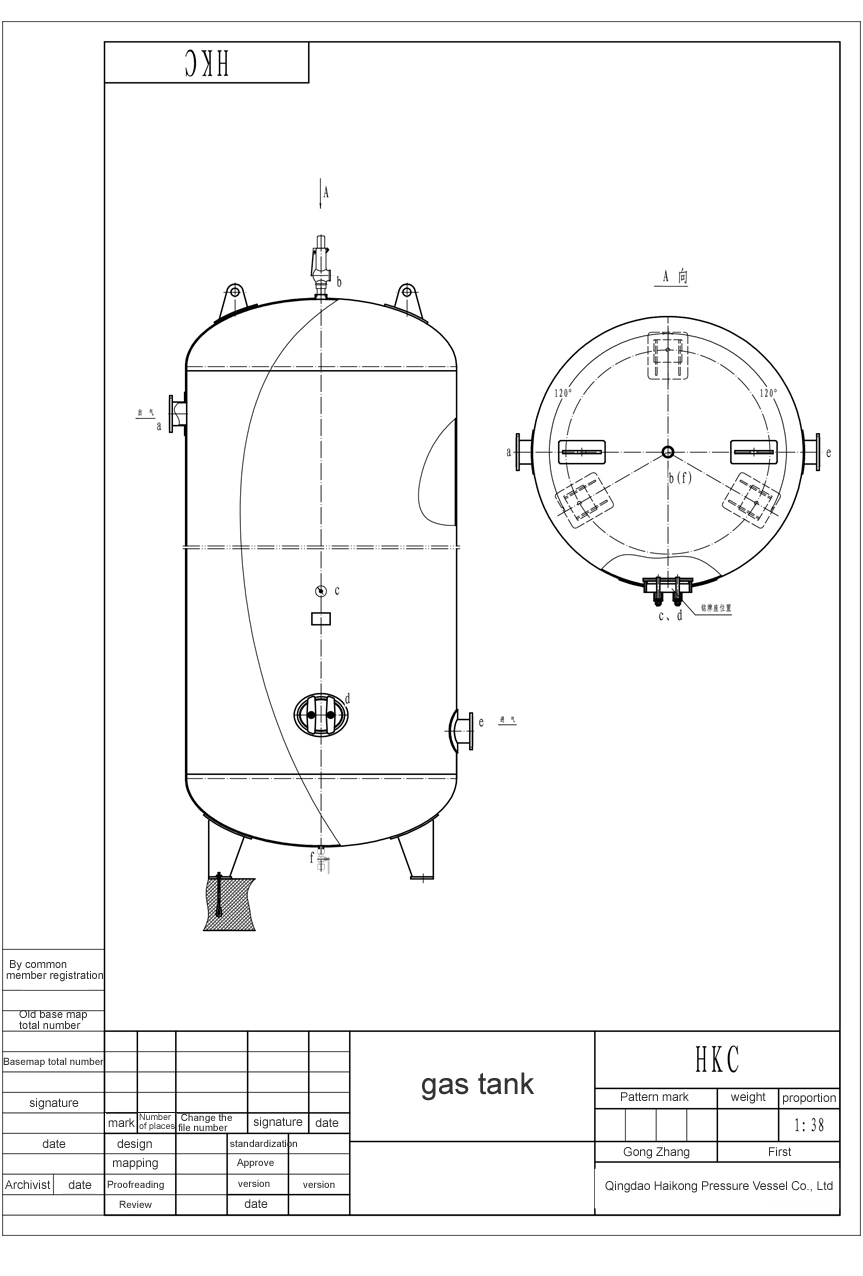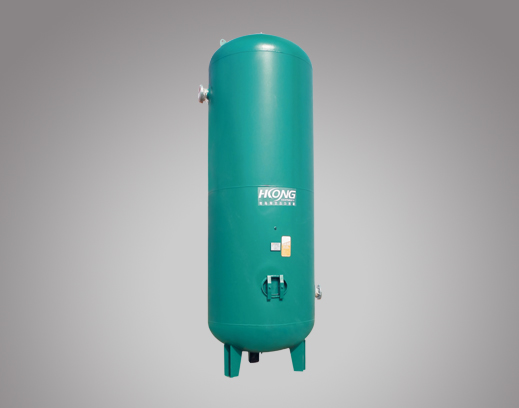The gas storage tank can be used to store compressed air in a factory using compressed gas to ensure the peak demand of the gas; to stabilize the pressure of the source And buffering; cooling the air and dirt in the air and discharging it from the system; eliminating or weakening the periodic current pulsation of the piston air compressor exhaust, stabilizing the pressure in the pipeline, and short after the shutdown The supply pipeline completes the necessary startup procedures during the time. ;

Introduction to Pressure Temperature Media
pressure
The pressure of the pressure vessel can come from two aspects. One is that the pressure is generated outside the container (increased), and the other is that the pressure is generated inside the container ( Increase).
Maximum working pressure, mostly refers to the highest pressure that can occur at the top of the container under normal operating conditions.
Design pressure is the pressure at which the thickness of the container shell is determined at the corresponding design temperature, ie the design pressure of the container marked on the nameplate The design pressure of the pressure vessel shall not be lower than the maximum working pressure; when the static pressure of the liquid column subjected to various parts of the vessel or the pressure component reaches 5% of the design pressure, the sum of the design pressure and the static pressure of the liquid column shall be taken. Design calculation of parts or components; pressure vessels equipped with safety valves shall be designed so that the pressure must not be lower than the opening pressure or burst pressure of the safety valve. The design pressure of the container shall be determined in accordance with the corresponding provisions of GB 150.
temperature
Metal temperature is the average temperature of the pressure component of the container along the thickness of the section. In any case, the surface temperature of the component metal must not exceed the allowable temperature of the steel.
Design temperature is the highest or lowest temperature that the shell wall or component metal may reach under normal design conditions under the appropriate design pressure. When the temperature of the shell wall or component metal is lower than -20 ° C, the design temperature is determined according to the lowest temperature; in addition, the design temperature is selected according to the highest temperature. The design temperature shall not be lower than the highest metal temperature possible for the component metal; for metal temperatures below 0 °C, the design temperature shall not be higher than the lowest metal temperature possible for the component metal. The design temperature of the container (ie, the temperature of the design medium marked on the nameplate of the container) refers to the design temperature of the housing.
media
The production process involves a wide variety of media and a variety of classification methods. Classified according to the state of matter, there are gases, liquids, liquefied gases, simple substances and mixtures; according to chemical characteristics, there are four kinds of flammable, flammable, inert and combustion-supporting; according to their degree of toxicity to humans, they can be classified into extreme hazards ( I), high hazard (II), moderate hazard (III), and mild hazard (IV).
